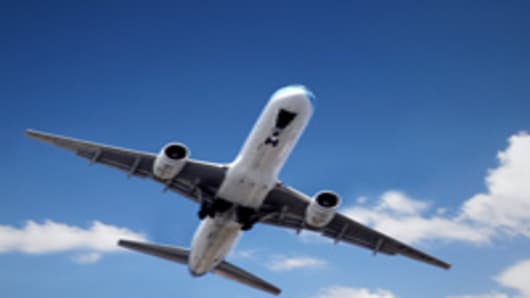From the dramatic rise and equally dramatic fall of fuel prices, to the volatile moves in Asia-Pacific forex markets, and now, slumping passenger loads, fate has dealt a cruel blow to the airline industry.
"Airlines are vulnerable in every way -- they are affected by political troubles in a country or region, economic downturns, everything," notes Nicholas Ionides, regional managing editor, Asia at Flight International. This sector has been hit hard by the financial crisis and now, what is probably the worst global recession since the Great Depression.
The astronomical run-up of oil prices to a high of $147 a barrel in July 2008, left many airlines scrambling to hedge their future fuel requirements. This especially after leading financial analysts forecast that oil could hit the $200 a barrel level.
But who would have thought that oil prices would tumble as rapidly as they rose? Crude futures are down more than 70 percent to date, hovering around $40 a barrel. Over the past 12 months, jet fuel prices are down over 40 percent. Carriers such as Cathay Pacific and Singapore Airlines, both of whom hedged forward, are bleeding red.
"A lot of airlines stayed unhedged as much as they possibly could ... when prices got to about $130 - $140 … they started to hedge at above $100," Peter Harbison, executive chairman at Centre for Asia Pacific Aviation told CNBC’s Asia Squawk Box. "A lot of carriers are stuck now with fixed purchase prices at that level."
As of 31 December 2008, Cathay Pacific's unrealized losses from soured bets on fuel hedges have hit $980 million. Fuel hedging losses at China Eastern Airlines stand at $906 million and it's forced the carrier to seek a third round of capital injection from the Chinese government.
Across the Pacific, things are no better. United Airlines hedged about 28 percent of its fuel needs for 2009 at $101 - $114 a barrel. If prices continue to trade in the $40 a barrel range, the airline could pay as much as 285 percent more than the spot price.
In comparison, Southwest Airlines -- it's hedged approximately 75 percent of its 2009 fuel needs at an average of $73 a barrel -- will only pay 183 percent premium to current prices.
"We’re anticipating probably something like $10 billion in this region (Asia Pacific) will be lost, if fuel prices stay down where they are at the moment,” Harbison said.
And that's not considering the massive currency fluctuations that have occurred in the past 12 months.
Currency Flux
The depreciation of the Aussie dollar and South Korean won has added to the pain of buying U.S. dollar-denominated fuel. Qantas reported a 66 percent drop in first-half profits, with its fuel bill up nearly 29 percent on year to $1.42 billion. That's almost tracked the decline of the Aussie dollar , which has fallen more than 30 percent from its July '08 high against the dollar.
This means at the peak of the Aussie's strength (0.985 to the dollar), Qantas paid just A$99.50 a barrel for its hedged position (US$98/bbl). At the current exchange rate (0.675 to the dollar), Qantas is paying roughly A$145 a barrel for its $98 hedge. That's an almost 47 percent increase.
Airlines tried to pass on energy costs to consumers by introducing fuel surcharges. But with passenger traffic in the Asia Pacific tumbling, many were forced to reduce or completely remove the surcharge in a bid to attract more customers.
In an attempt to cut costs and maximize capacity, airlines have announced plans to cut flights. Singapore Airlines, the only carrier to fly all-business class flights to New York and Los Angeles, has reduced its 14 weekly flights down to 10.
“Flexibility is key and airlines have to do everything they can to keep costs as low as possible. It is a very low-margin business at the best of times so in difficult times cost control is even more important … Every extra dollar counts,” says Ionides. "Some are responding by temporarily parking aircraft, speeding up the retirement of older aircraft, preserving cash by deferring large capital expenditure plans, for example," he adds.
Banks, cars and now planes. As governments around the world work to jumpstart the global economy, it remains to be seen whether how many carriers will be able to weather the storm.
But there is a silver lining -- for the consumers at least. There’s no better time to travel on the cheap, with full-service to boot, as airlines slash ticket prices to boost demand. And if you're not interested in the full-service way, budget airlines are flying high. Most low cost carriers have no hedges whatsoever and their customers are reaping the benefits of low oil prices.



